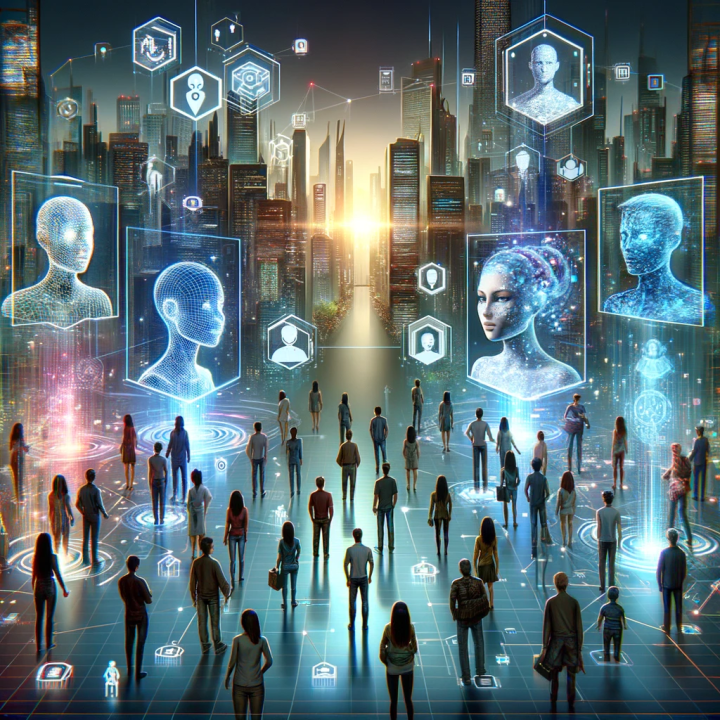
In the contemporary, highly interconnected society, our identities are influenced not only by our physical environments but also significantly by our online engagements. The formation of identity within the digital realm is a multifaceted process that encompasses personal expression, social engagement, and the management of diverse online personas. This blog examines some of the ways in which digital platforms impact our identities, the challenges that emerge, and the consequences for our perception of self in the current age.
One key aspect of identity in the digital world is how flexible it is. Unlike the more fixed ideas of identity based on physical traits and social roles, digital identities can change and grow in real-time. Social media, online gaming, and virtual communities give people the chance to shape their identities by sharing selectively, trying out new personas, and connecting with various groups. This flexibility lets users dive into different parts of who they are, whether itÔÇÖs their hobbies, interests, or cultural backgrounds. Take platforms like Instagram or TikTok, for example. They motivate users to express their creativity, fashion sense, and lifestyle, leading to a carefully crafted image of themselves. This can create a richer understanding of identity, where people can play around with how they want others to see them.
Online Identities and Privacy:
Creating different online identities brings up some interesting issues about being real and staying private. A lot of people enjoy the freedom that comes with being anonymous online, letting them share thoughts and opinions they might shy away from in person. This is especially important for marginalized groups, who can find comfort and community in digital spaces where they can truly be themselves without worrying about being judged. On the flip side, this anonymity can sometimes cause a disconnect from who they really are. Some folks might find it tough to reconcile their online persona with their real-life self, which can lead to feelings of imposter syndrome or a sense of inauthenticity. The key is to strike a balance between being genuine and dealing with the pressures that come from social media.
The Role of Community:
Communities are instrumental in the formation of digital identities. Online platforms enable individuals to connect with others who share similar interests, cultivating a sense of belonging that can either strengthen or challenge personal identities. Whether through discussion forums, social media networks, or multiplayer gaming environments, these communities provide avenues for support, affirmation, and even opposition. Nonetheless, the impact of community engagement can be multifaceted. While constructive interactions can bolster an individual’s self-concept, adverse experiences, such as cyberbullying or hostile atmospheres, can severely affect mental well-being and self-worth. Additionally, the power dynamics present within these communities can influence how individuals express their identities, occasionally compelling them to adhere to collective norms or expectations.
The formation of identity within a digital environment is a fluid and intricate process that mirrors the complexities inherent in human experience. Although digital platforms present valuable opportunities for self-expression and the development of communities, they also introduce considerable challenges concerning authenticity, mental well-being, and societal expectations. By approaching these complexities with deliberate thought and mindfulness, individuals can foster identities that are both genuine and robust in response to the continuously changing digital landscape.


Your blog on this topic of identities in a digital era is very interesting and you analyse how our identities can be affected by digital platforms well by explaining how privacy online can be different than our in-person identities due to audiences being able to express opinions that may be looked down on or confusing to the people the audience surround themselves with which highlights how different the audience can be in different scenarios. The way you bring communities into the topic is also done well and I agree that communities are a big part of our identities and forming our identities as the audience are able to surround themselves with people online with similar interests and can make the audience connect with their identities a lot more. Bringing in this negative part of communities online is also a crucial part of forming an identity as it can force audiences to change their identities online. You can see that you’ve put theory within this blog which is done well if the audience are familiar with the theory.
A few improvements would include adding a feature image to the blog as this makes your blog more intriguing to audiences and can get to know a bit more on what the blog topic is before reading the content. Like mentioned before you have added the theory throughout the blog, but this is known to me due to being familiar with the theory, so audiences that don’t know about the theory would be lost reading your blog about identity as you have not explained identity theory and where is has come from. Context is needed to understand your blog and so it is easier to follow. Using a specific media example will also bring your blog up another notch as it helps the audience understand the theory a lot more when applied to something. Also, include references either at the end of the post or in hyperlinks throughout the blog so the audience are encouraged to go read more and will show off you’re research.
Overall, the blog is very well written and you’ve included the theory throughout your blog. There just needs to be a few adjustments in order to have more interaction and more understanding on the topic.